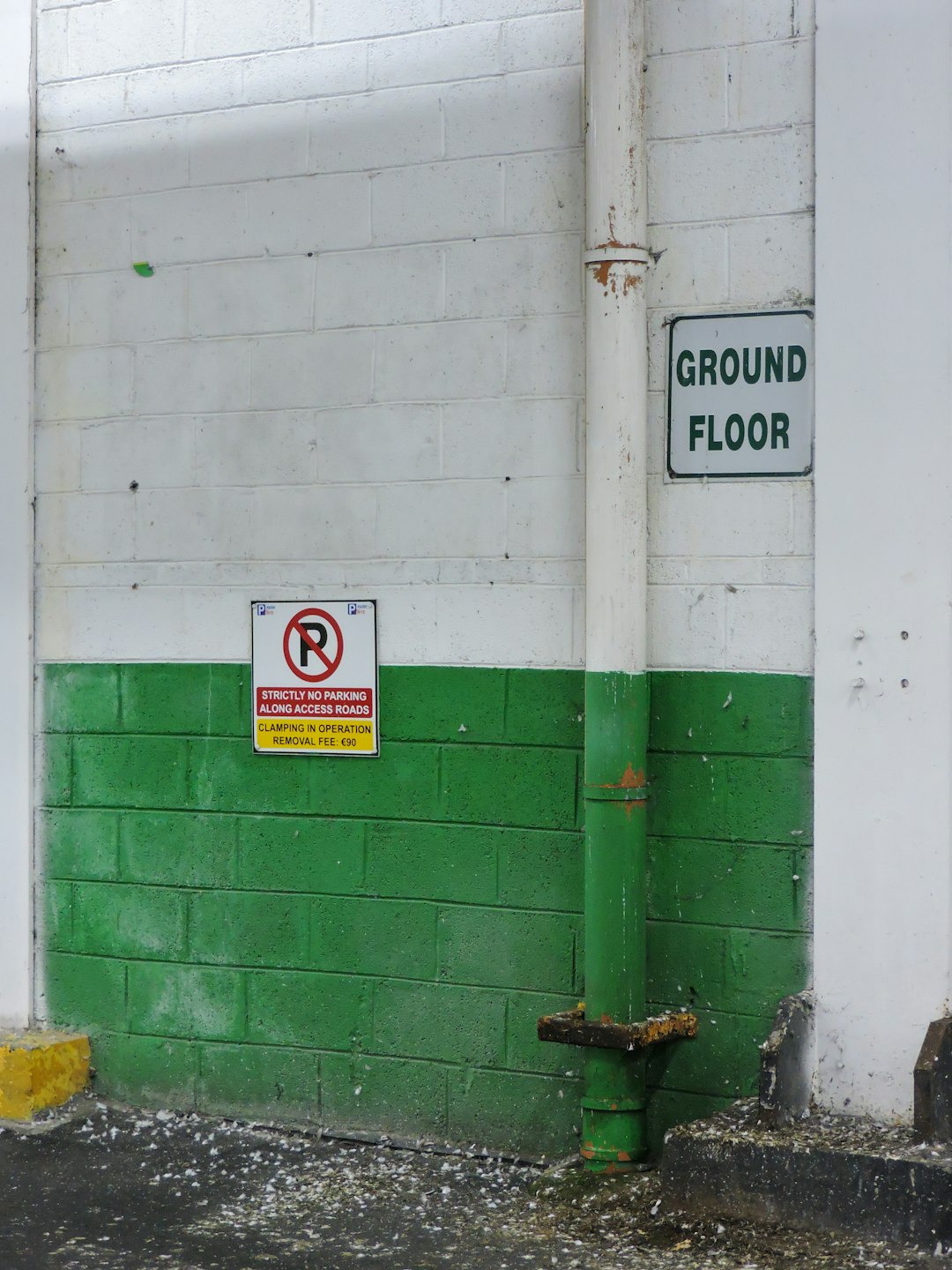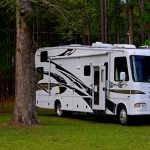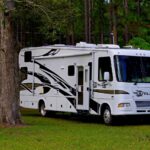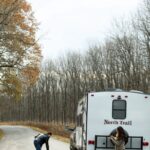
Ever found yourself exhausted after a long day behind the wheel of your RV, scrambling to find a campsite in the dark, or rushing to pack up before dawn? You’re not alone! The secret to transforming your RV trips from stressful sprints into smooth, enjoyable journeys lies in mastering the 3s of RVing—a simple yet powerful travel philosophy that has saved countless road warriors from burnout and chaos.
In this guide, we’ll unravel the mystery behind the famous 3-3-3 Rule—why driving no more than 3 hours, arriving by 3 PM, and staying at least 3 nights can revolutionize your RV experience. But we don’t stop there! We’ll also share 7 essential tips inspired by this rule, including safety checks, packing hacks, and real-life stories from seasoned RVers. Ready to hit the road smarter, safer, and more relaxed? Let’s dive in!
Key Takeaways
- Drive no more than 3 hours or 300 miles daily to prevent fatigue and enjoy the journey safely.
- Arrive at your campground by 3 PM to secure the best spot and have ample daylight for setup.
- Stay at least 3 nights per location to relax, explore, and avoid the stress of constant packing.
- Perform essential safety checks before every trip: tires, brakes, and load security.
- Use smart packing strategies like zoning and collapsible gear to maximize space and convenience.
- Follow campground etiquette to ensure a peaceful and friendly environment for all.
- Whether renting from Cruise America or owning your rig, the 3s rule applies universally for a better RV lifestyle.
👉 Shop RV Essentials:
- Goodyear Endurance RV Tires on Amazon | Camco Sewer Hoses on Walmart | Dicor Roof Sealants on Camping World
Master these 3s, and you’ll be cruising toward your best RV adventures yet!
Table of Contents
- ⚡️ Quick Tips and Facts About the 3s of RVing
- 🏕️ The Origins and Evolution of the 3-3-3 RV Rule Explained
- 🔍 What Exactly Is the 3-3-3 Rule of RV Travel? Breaking Down the Basics
- 🚐 3 Essential RV Safety Checks Before You Hit the Road
- 🛠️ 3 Must-Know RV Maintenance Tips to Keep Your Home on Wheels Rolling Smoothly
- 🧳 3 Key Packing Strategies for Stress-Free RV Adventures
- ⛺ 3 Smart Camping Etiquette Rules Every RVer Should Follow
- 📅 How to Plan Your RV Trip Using the 3-3-3 Rule for Maximum Fun and Safety
- 🚍 Renting vs. Owning: How the 3-3-3 Rule Applies to Cruise America and Other RV Rentals
- 🌟 Real RVer Stories: How the 3s of RVing Saved Our Trips
- 🔧 Troubleshooting Common RV Issues Within the 3-3-3 Framework
- 💡 Bonus Tips: Beyond the 3-3-3 Rule — Advanced RVing Hacks
- 🎯 Conclusion: Mastering the 3s of RVing for Your Ultimate Road Trip
- 🔗 Recommended Links for RV Enthusiasts
- ❓ Frequently Asked Questions About the 3-3-3 RV Rule
- 📚 Reference Links and Further Reading
⚡️ Quick Tips and Facts About the 3s of RVing
Welcome to the ultimate guide on the 3s of RVing, brought to you by the RV enthusiasts at RV Brands™! Whether you’re a newbie or a seasoned road warrior, the 3-3-3 Rule is a game-changer for stress-free, safe, and fun RV adventures. Here’s a quick cheat sheet before we dive deeper:
- Drive no more than 3 hours or 300 miles per day to avoid fatigue and enjoy the journey.
- Arrive at your campground by 3 PM to secure your spot and have plenty of daylight for setup.
- Stay at least 3 nights at each location to relax, explore, and avoid the “pack up and move” frenzy.
Why these numbers? Because RVing isn’t a race—it’s a lifestyle! Studies show that driving more than 3 hours can lead to fatigue levels comparable to drunk driving (NHTSA). Arriving early means less stress and more daylight to get settled. And staying multiple nights lets you truly soak in the experience.
Pro Tip: Combine the 3-3-3 Rule with regular breaks every 2-3 hours for stretching and hydration. Your body and mind will thank you! 🚐💨
For more on how RV living can save you money, check out our article Does Living in an RV Actually Save Money? 12 Truths for 2025 🚐💰.
🏕️ The Origins and Evolution of the 3-3-3 RV Rule Explained
The 3-3-3 Rule didn’t just pop out of thin air—it evolved from decades of RV travel wisdom, campground feedback, and safety research. The folks at Cruise America and KOA helped popularize this simple yet effective guideline.
Back in the early days of RVing, travelers often pushed themselves too hard—driving long hours, arriving late, and bouncing from site to site without rest. The result? Burnout, accidents, and missed opportunities to enjoy the journey.
The 3-3-3 Rule emerged as a balanced approach to:
- Enhance safety by limiting driving time and fatigue.
- Improve campground experiences by arriving early and settling in.
- Encourage relaxation and exploration by staying longer.
Over time, variations like the 4-4-4 or 2-2-2 rules have popped up, tailored to different travel styles. But the core idea remains: slow down, arrive early, and stay awhile.
🔍 What Exactly Is the 3-3-3 Rule of RV Travel? Breaking Down the Basics
Let’s unpack the 3-3-3 Rule like a well-packed RV:
| Aspect | What It Means | Why It Matters |
|---|---|---|
| 3 Hours / 300 Miles | Limit daily driving time/distance | Prevents fatigue, improves safety |
| 3 PM Arrival | Arrive at campground by mid-afternoon | Secures campsite, daylight setup |
| 3 Nights Stay | Spend at least three nights per stop | Reduces stress, allows exploration |
Driving 3 hours or 300 miles: Sounds short? You bet! But with RVs, those miles can take longer due to slower speeds, traffic, and stops. Limiting driving helps you avoid exhaustion and keeps you alert. Plus, it leaves time for spontaneous detours or scenic stops.
Arriving by 3 PM: This is the golden hour for RVers. Campgrounds often operate on a first-come, first-served basis. Arriving early means you get your pick of sites and time to hook up utilities without rushing. It also gives you a buffer if you hit traffic or delays.
Staying 3 nights: The first night is often busy with setup and figuring out hookups. The last night is usually about packing and prepping to leave. That leaves at least two full days to relax, explore, or just kick back around the campfire.
🚐 3 Essential RV Safety Checks Before You Hit the Road
Safety first, friends! Before you roll out, here are the 3 must-do safety checks that align perfectly with the 3-3-3 mindset:
-
Tire Inspection: Check tire pressure and tread depth. Underinflated or worn tires are a leading cause of RV blowouts. We swear by the Goodyear Endurance RV Tires for durability.
-
Brake and Light Test: Make sure brakes respond smoothly and all lights (brake, turn signals, headlights) work. Safety on the road depends on being seen and stopping on time.
-
Secure All Load and Gear: Double-check that everything inside the RV is stowed and secured. Loose items can become dangerous projectiles during sudden stops.
Bonus Tip: Carry a roadside emergency kit with flares, a jack, and basic tools. We learned this the hard way during a roadside tire change in Montana—trust us, it’s worth the prep!
🛠️ 3 Must-Know RV Maintenance Tips to Keep Your Home on Wheels Rolling Smoothly
Maintenance is the secret sauce to stress-free RVing. Here are the 3 maintenance essentials that every RVer should master:
| Maintenance Task | Why It’s Important | How Often to Do It |
|---|---|---|
| Roof Inspection | Prevent leaks and costly water damage | Every 6 months or after storms |
| Battery Care | Ensures power for appliances and lights | Monthly during use, quarterly off-season |
| Holding Tank Cleaning | Avoid odors and clogs | After every trip or as needed |
Roof Inspection: Your RV roof is like a hat protecting your home. Cracks or worn seals can lead to leaks that ruin your trip. Use a quality RV roof sealant like Dicor Lap Sealant for repairs.
Battery Care: RV batteries power everything from lights to water pumps. Keep terminals clean and charged. Consider upgrading to AGM batteries for longer life.
Holding Tank Cleaning: Nobody wants a stinky surprise. Use enzyme treatments and flush tanks regularly. The Camco RhinoFLEX Sewer Hose is a camper favorite for durability and ease of use.
🧳 3 Key Packing Strategies for Stress-Free RV Adventures
Packing for an RV trip is an art and a science. Here are the 3 packing hacks to keep your rig organized and your sanity intact:
-
Pack in Zones: Designate areas for kitchen, clothes, tools, and outdoor gear. This makes finding stuff a breeze and prevents clutter.
-
Use Collapsible and Multi-Use Items: Think collapsible bowls, nesting cookware, and furniture that doubles as storage.
-
Plan for Weather and Activities: Layered clothing, rain gear, and hiking boots can save you from last-minute scrambles.
We once packed our entire kitchen only to realize we forgot the can opener—lesson learned! Always double-check your essentials list.
⛺ 3 Smart Camping Etiquette Rules Every RVer Should Follow
Camping is a community experience. Here are the 3 golden rules to keep your neighbors happy and the campground peaceful:
-
Keep Noise to a Minimum: Respect quiet hours, usually from 10 PM to 7 AM. Use headphones for music and keep generators off during these times.
-
Clean Up After Yourself: Leave your site cleaner than you found it. Dispose of trash properly and don’t dump wastewater outside designated areas.
-
Respect Shared Spaces: Be mindful of parking, fire pits, and picnic tables. Share the space and be friendly!
Following these simple rules makes camping enjoyable for everyone—and builds lifelong friendships.
📅 How to Plan Your RV Trip Using the 3-3-3 Rule for Maximum Fun and Safety
Planning your RV adventure with the 3-3-3 Rule in mind can transform your trip from chaotic to carefree. Here’s a step-by-step guide:
-
Map Your Route: Break your journey into 3-hour driving segments (~300 miles). Use apps like Roadtrippers or RV Trip Wizard for route planning.
-
Book Campgrounds Early: Aim for check-in around 3 PM. Reserve spots in advance, especially during peak seasons, to avoid last-minute scrambles.
-
Schedule 3-Night Stays: Plan activities and rest days to fully enjoy each location. Consider “base camping” where you stay put and explore locally by bike or foot.
-
Build in Flex Days: Life happens! Weather, mechanical issues, or just wanting to chill—extra days give you flexibility.
-
Pack Smart: Use our packing strategies to avoid overloading and last-minute packing stress.
This approach balances adventure with relaxation, making your RV trip truly memorable.
🚍 Renting vs. Owning: How the 3-3-3 Rule Applies to Cruise America and Other RV Rentals
Not ready to buy? Renting an RV is a fantastic way to test the waters—and the 3-3-3 Rule works just as well here.
Cruise America, one of the largest RV rental companies, recommends the 3-3-3 Rule to their renters for a safe and enjoyable experience. Renting lets you:
- Try different RV models without commitment.
- Avoid maintenance headaches—the rental company handles it.
- Focus on the experience without the long-term costs.
However, renters should be extra mindful of the 3 PM arrival rule since unfamiliarity with the rig and campground can add setup time.
Pro Tip: When renting, always do a thorough walk-around and checklist with the rental agent to avoid surprises.
CHECK PRICE on Cruise America RV Rentals:
🌟 Real RVer Stories: How the 3s of RVing Saved Our Trips
Nothing beats real-life tales to show why the 3-3-3 Rule rocks. Here’s a story from our RV Brands™ team member, Lisa:
“On our first big trip, we ignored the 3 PM arrival and ended up driving into the dark, scrambling for a campsite. It was stressful and unsafe. After adopting the 3-3-3 Rule on our next trip, we arrived early, set up calmly, and enjoyed two full days exploring the area. It was a total game-changer!”
Another RVer, Mike, shared how limiting driving to 3 hours helped him avoid fatigue and enjoy roadside attractions he would have otherwise missed.
These stories prove the 3s aren’t just rules—they’re your travel buddies for a smoother, safer, and more fun RV life.
🔧 Troubleshooting Common RV Issues Within the 3-3-3 Framework
Even with the best planning, RV life throws curveballs. Here’s how the 3-3-3 mindset helps you troubleshoot:
| Issue | How 3-3-3 Helps | Quick Fix Tips |
|---|---|---|
| Running out of water | Staying 3 nights means monitoring usage | Carry extra water jugs; refill early |
| Late arrival stress | Arriving by 3 PM avoids rushed setup | Plan alternate campgrounds in advance |
| Driver fatigue | Limiting to 3 hours reduces exhaustion | Take breaks every hour; share driving duties |
Bonus: Use apps like Campendium or AllStays to find last-minute campsites or services if plans change.
💡 Bonus Tips: Beyond the 3-3-3 Rule — Advanced RVing Hacks
Ready to level up? Here are some pro tips that complement the 3-3-3 Rule:
-
Use Solar Panels: Extend your off-grid stays without worrying about hookups. Brands like Renogy are top-rated.
-
Invest in a Towable Vehicle: Base camp with your RV and explore locally without packing/unpacking.
-
Smart Tech: Apps for weather, navigation, and campground reviews keep you ahead of surprises.
-
Join RV Clubs: KOA, Good Sam, and Passport America offer discounts and community.
-
Practice “Slow Travel”: Spend even longer than 3 nights to truly unwind and connect with places.
These hacks make your RV lifestyle richer, safer, and more enjoyable.
🎯 Conclusion: Mastering the 3s of RVing for Your Ultimate Road Trip
So, what’s the takeaway from our deep dive into the 3-3-3 Rule of RVing? It’s simple: slow down, arrive early, and stay awhile. This trio of travel wisdom is your secret weapon to transform hectic road trips into enjoyable, safe, and memorable adventures.
By limiting your daily drive to 3 hours or 300 miles, you protect yourself from fatigue and open the door to spontaneous exploration. Arriving by 3 PM means you’ll avoid the stress of last-minute campsite hunting and have daylight to set up comfortably. And spending at least 3 nights at each location lets you truly unwind, explore, and savor the RV lifestyle.
Whether you’re renting a rig from Cruise America or owning a luxury fifth wheel, the 3s apply universally. They’re not rigid rules but flexible guidelines that prioritize your well-being and enjoyment.
Remember Lisa’s story? Ignoring the 3 PM arrival led to a stressful night, but embracing the 3-3-3 Rule turned her next trip into a breeze. That’s the power of these simple numbers.
So next time you hit the road, pack your patience, plan your 3s, and get ready for an RV adventure that’s as smooth as a freshly paved highway. Happy trails! 🚐✨
🔗 Recommended Links for RV Enthusiasts
CHECK PRICE on Popular RV Essentials & Rentals:
- Cruise America RV Rentals: RVShare | Outdoorsy | Cruise America Official Website
- Goodyear Endurance RV Tires: Amazon | Walmart
- Dicor Lap Sealant (Roof Sealant): Amazon | Camping World
- Camco RhinoFLEX Sewer Hose: Amazon | Walmart
- Renogy Solar Panels: Amazon | Renogy Official Website
Recommended Books for RVers:
- The RV Handbook: Essential How-To Guide for the RV Owner by Dave Solberg — Amazon
- RV Living: The Ultimate Guide to Full-Time RV Living and Travel by Mike and Jennifer Wendland — Amazon
- The Complete Guide to RVing by Mark J. Polk — Amazon
❓ Frequently Asked Questions About the 3-3-3 RV Rule
What are the basic rules of RVing for beginners?
For beginners, the 3-3-3 Rule is a fantastic starting point: drive no more than 3 hours or 300 miles daily, arrive by 3 PM, and stay 3 nights at each campground. This pacing helps avoid overwhelm and fatigue. Additionally, beginners should familiarize themselves with their rig’s dimensions, practice driving in safe areas, and always perform pre-trip safety checks.
How do I plan a safe and enjoyable RV trip with my family?
Planning with safety and fun in mind means balancing driving time, rest, and activities. Use the 3-3-3 Rule to set a manageable pace. Involve family members in route planning and campground selection to keep everyone engaged. Pack entertainment, plan regular breaks, and choose campgrounds with family-friendly amenities. Always have a backup plan for unexpected weather or mechanical issues.
What are some essential items to bring when going on an RV adventure?
Essentials include:
- Safety gear: first aid kit, fire extinguisher, roadside emergency kit
- Maintenance tools: tire pressure gauge, basic tool kit, spare fuses
- Comfort items: bedding, weather-appropriate clothing, cooking supplies
- Navigation and communication: GPS, maps, cell phone chargers
- Cleaning supplies and waste management tools
Packing in zones and using collapsible items helps maximize space and organization.
What are some common mistakes to avoid when maintaining my RV?
Common pitfalls include neglecting roof inspections, ignoring battery maintenance, and failing to clean holding tanks regularly. Skipping these can lead to leaks, power failures, or unpleasant odors. Also, avoid overloading your RV, which stresses tires and suspension. Regularly check tire pressure and brakes, and don’t delay repairs. Following a maintenance schedule aligned with your travel frequency keeps your RV road-ready.
How flexible is the 3-3-3 Rule? Can I adjust it?
Absolutely! The 3-3-3 Rule is a guideline, not a hard-and-fast law. Some RVers prefer a 4-4-4 or 2-2-2 pace depending on their style, rig type, or trip goals. The key is to listen to your body, your rig, and your schedule. Flexibility within the framework ensures you get the most enjoyment without burnout.
📚 Reference Links and Further Reading
- Cruise America: What is the 3-3-3 RV Travel Rule?
- KOA Camping Blog: The 333 RV Rule
- National Highway Traffic Safety Administration: Drowsy Driving
- Camco Products Official Website
- Renogy Solar Official Website
- RVShare: Cruise America RV Rentals
- Outdoorsy: Cruise America Rentals
- Dicor Sealants Official Site
For more on full-time RV living and luxury rigs, check out our categories at Full-Time RVing and Luxury RVs.
Happy RVing, and may your 3s always lead to smooth roads and starry nights! 🚐🌟




